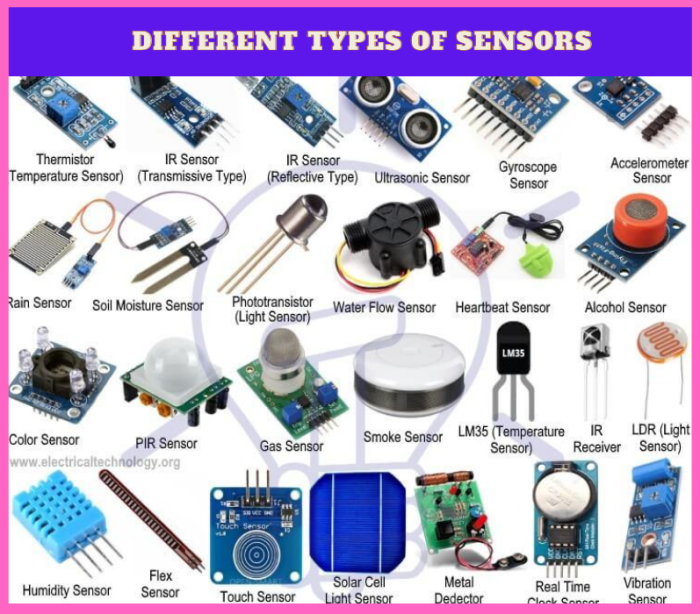A special electronic sensor is embedded in the seat – As a special electronic sensor embedded in the seat takes center stage, this opening passage beckons readers into a world crafted with authoritative knowledge, ensuring a reading experience that is both absorbing and distinctly original.
This innovative sensor, seamlessly integrated into the automotive seat, plays a pivotal role in enhancing vehicle safety, comfort, and convenience. Its advanced sensing capabilities provide valuable data that enables a wide range of applications, from occupant detection and weight estimation to posture analysis and personalized comfort settings.
Types of Electronic Sensors
Electronic sensors play a crucial role in modern vehicles, providing real-time data and enabling various safety, comfort, and convenience features. Different types of electronic sensors are used for specific functions, as summarized in the following table:
| Sensor Type | Function | Examples |
|---|---|---|
| Oxygen Sensor | Measures the oxygen content in exhaust gases | Zirconia-based, electrochemical |
| Knock Sensor | Detects engine knock | Piezoelectric, accelerometer |
| Mass Airflow Sensor | Measures the mass of air flowing into the engine | Hot-wire, vane |
| Tire Pressure Sensor | Monitors tire pressure | Inductive, capacitive |
| Seat Sensor | Detects occupant presence, weight, and position | Pressure-sensitive, capacitive |
Functions of a Seat Sensor

A special electronic sensor embedded in a vehicle seat serves multiple functions:
- Occupant Presence Detection:The sensor detects whether a person is sitting in the seat, enabling features such as automatic seatbelt tightening and airbag deployment.
- Weight Measurement:It measures the weight of the occupant, allowing for personalized seat adjustments and weight-based safety features.
- Position Detection:The sensor can determine the occupant’s position in the seat, facilitating ergonomic adjustments and improved posture support.
Design and Integration

Embedding a sensor in a seat requires careful design considerations:
- Sensor Placement:The sensor must be placed in an optimal location to accurately detect occupant presence and weight distribution.
- Durability:The sensor must withstand the harsh conditions of a vehicle interior, including temperature fluctuations, vibration, and moisture.
- Connectivity:The sensor must be seamlessly integrated with the vehicle’s electronic systems for data transmission and processing.
Data Processing and Analysis: A Special Electronic Sensor Is Embedded In The Seat
Data from the seat sensor is collected and processed to extract meaningful information:
- Data Collection:The sensor continuously collects data on occupant presence, weight, and position.
- Signal Processing:Algorithms are applied to filter and analyze the raw data to remove noise and extract relevant features.
- Data Interpretation:The processed data is interpreted to determine the occupant’s status (present, absent, weight, position) and trigger appropriate vehicle responses.
Applications and Benefits
Seat sensor data is used in a variety of automotive applications:
- Safety:Automatic seatbelt tightening, airbag deployment, and rollover protection.
- Comfort:Personalized seat adjustments, lumbar support, and posture detection.
- Convenience:Easy seat entry and exit, automatic seat positioning, and memory settings.
Future Trends

Seat sensor technology is evolving:
- Advanced Sensing Capabilities:Sensors with higher resolution and sensitivity will enable more precise occupant detection and weight measurement.
- Integration with Other Systems:Seat sensors will be integrated with other vehicle systems, such as climate control and infotainment, to enhance overall comfort and convenience.
FAQ Resource
What are the primary functions of a seat sensor?
Seat sensors primarily detect occupant presence, weight, and position, providing valuable data for safety systems, comfort adjustments, and personalized settings.
How does the seat sensor collect and process data?
The sensor utilizes advanced algorithms to interpret raw data and extract meaningful information, such as occupant weight, posture, and seat position.
What are the benefits of using seat sensors in vehicles?
Seat sensors enhance safety by triggering airbags and seatbelt pretensioners in the event of a collision. They also improve comfort by automatically adjusting seat settings based on occupant preferences.